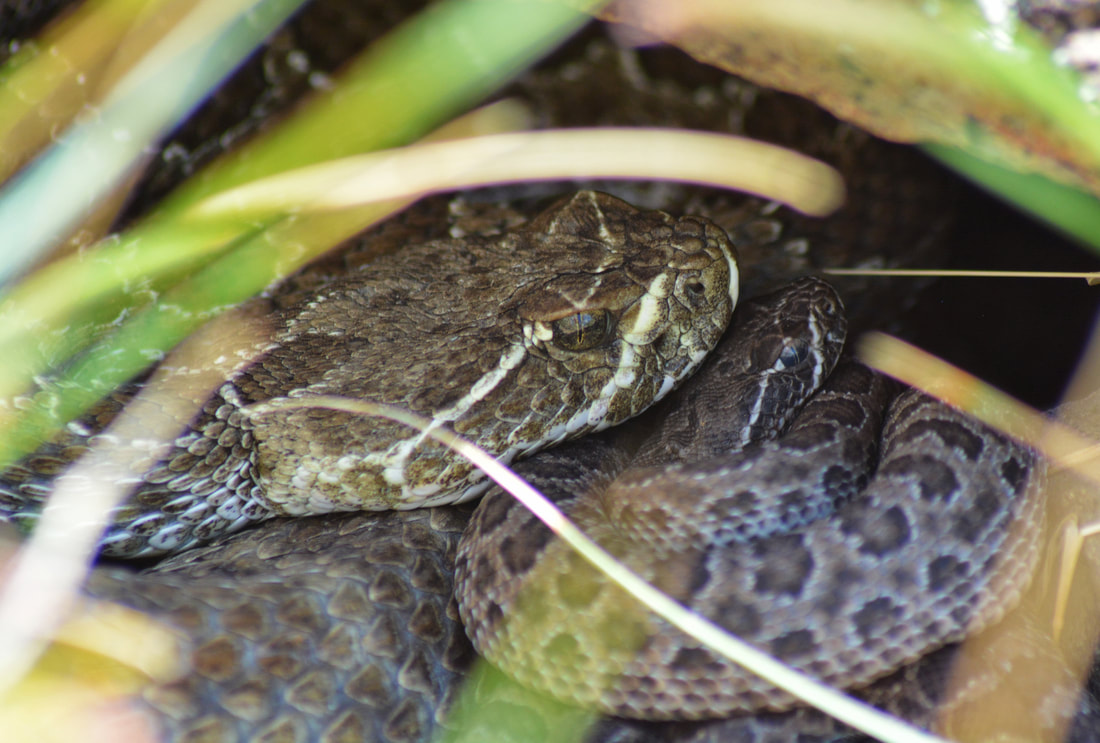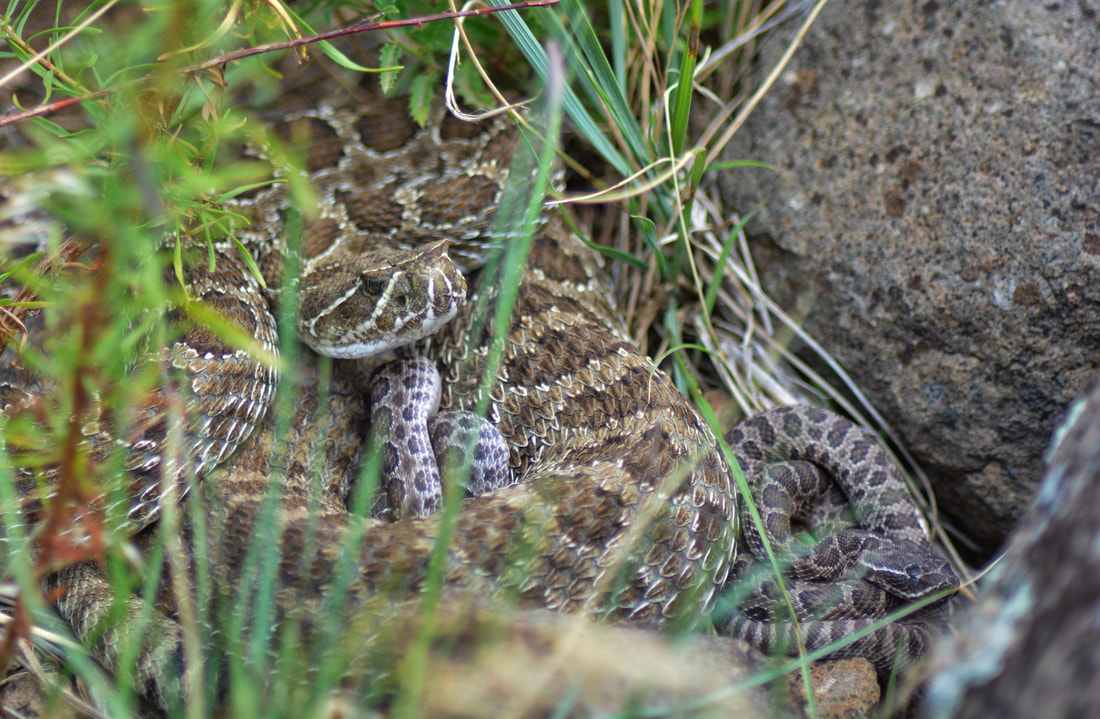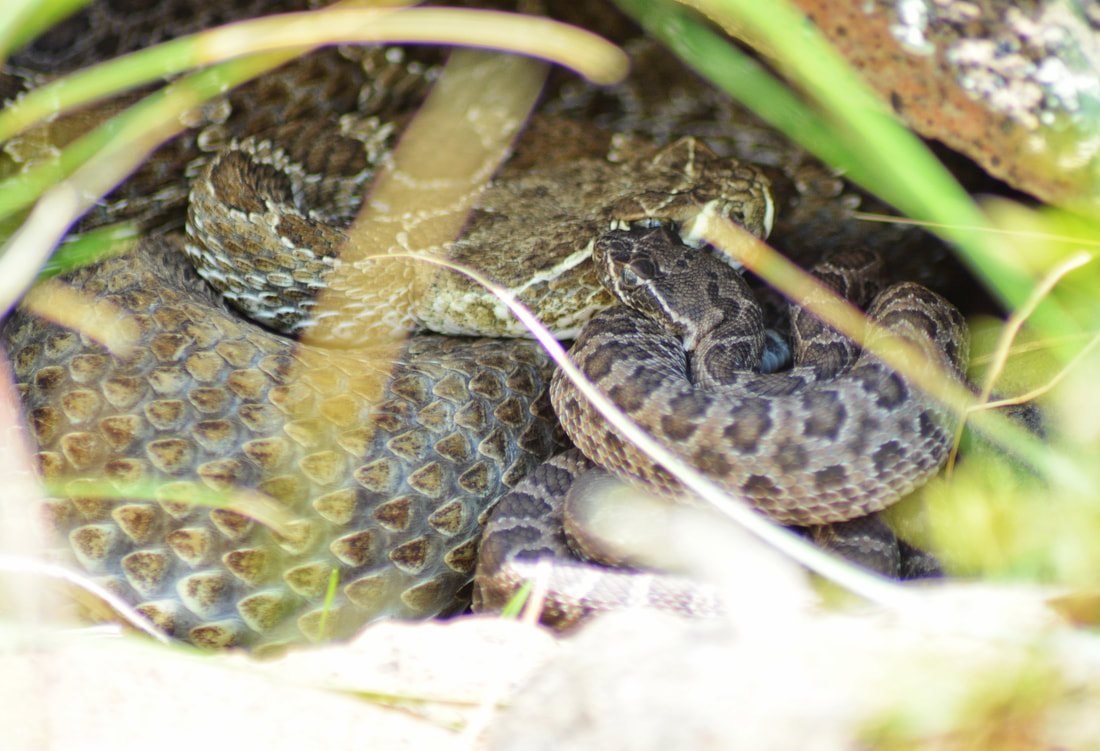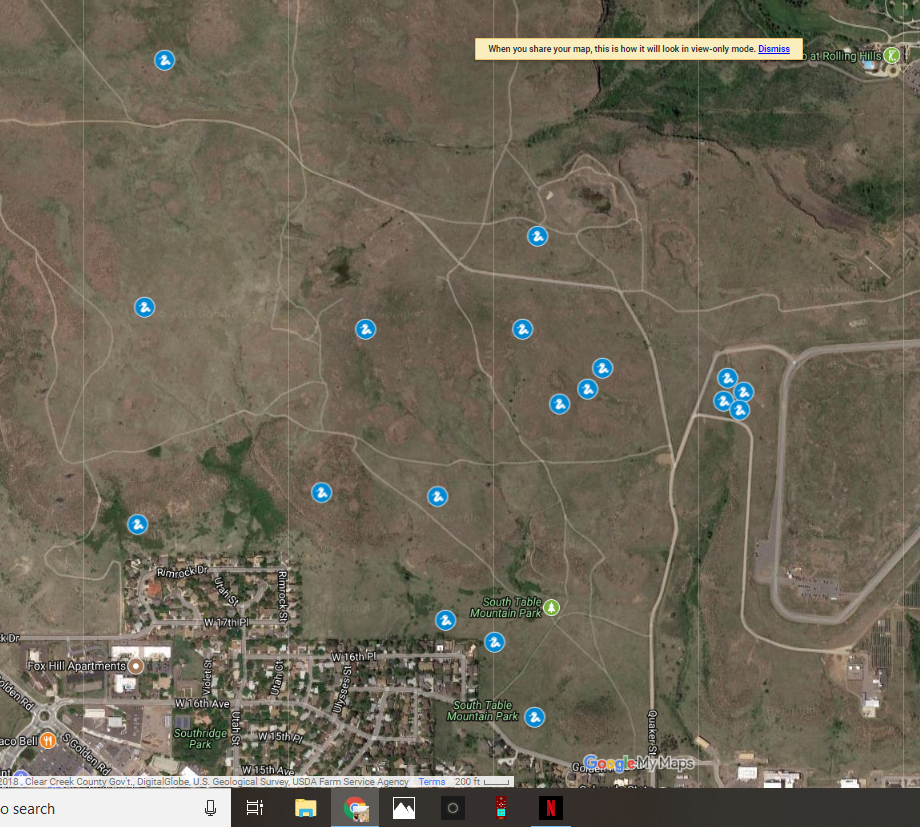|
Hot. Smoky. Stormy. It’s been somewhat uncomfortable outdoors recently. For Prairie Rattlesnakes, it’s a special time of year. Babies will be born soon. Last year, at North Table Mountain Park (Jefferson County Open Space) we saw our first rattlesnake babies, referred to as “neonates”, around the first week of August. More neonates were discovered a couple of weeks later. Rattlesnakes, unlike many snakes, give birth to their young rather than laying eggs. For the past six or seven weeks, expecting mothers likely have been near rock outcrops under good cover while also having opportunities to bask throughout the day. Often times, mothers will share a rock with other female rattlesnakes.This shared space is referred to as a “rookery” (a term important to birds, too). We’re watching three rookeries at South Table Mountain this year. The mothers move back and forth between sun and shade to regulate their temperature, allowing proper development of their embryos. In fact, one female is observed regulating her temperature on one side of a rock in the morning, and then another side in the afternoon. Mother and baby rattlesnake at North Table Mountain Park on August 17, 2017 On the Front Range, neonates are born during the middle weeks of August. What happens next is amazing, and we learn more and more with each study. After the young are born, the mothers stay with their newborns. Many reptiles do not do this. For example, sea turtles lay eggs on the beach and then go right back to the ocean. This maternal behavior is not well understood and is limited in length. After 7-10 days (on average) the neonates shed their skin for the first time. At this point, the mother leaves to presumably feed and restore reserves to survive the winter. Where neonates go is poorly understood, and it’s not clear how many of them find an overwintering den and survive to see the next spring season. Young rattlesnakes are hard to detect. They’re small for starters, at around 6”-8” or so. Then, they’re quiet. They do rattle, but it’s hard to hear because their rattle is small; consisting of only a few links or segments. Neonates shake their tail, but only have a button, which is not audible without any other links, which are added at each shedding event. Young rattlesnakes have slightly different venom properties. Their venom is adapted to help kill and digest bugs and lizards. Since young snakes are small, they don’t deliver a lot of venom. As they mature the venom shifts to properties adapted to kill and digest small mammals, though some rattlesnakes continue to eat lizards as the opportunity presents itself. Larger snakes may deliver larger amounts of venom making them more dangerous if you are bitten. Mother and neonates, August 17, 2017 at North Table Mountain. For now, we continue to track our 15 rattlesnakes throughout South Table Mountain. We will keep you up to date as the young are born! Above is a current map of the rattlesnakes we are tracking at South Table Mountain. What should you do if you encounter a rattlesnake on a trail?
What should you do if you are bitten by a rattlesnake?
How should you protect your dog?
3 Comments
Leave a Reply. |
Rattler TattlerAuthorsAdaptation Environmental Team: Bryon, Joe, and Kelly Categories
All
Archives
July 2023
|
|
Copyright © Adaptation Environmental Services L.L.C. circa 2012
|
Denver, Colorado
|





 RSS Feed
RSS Feed